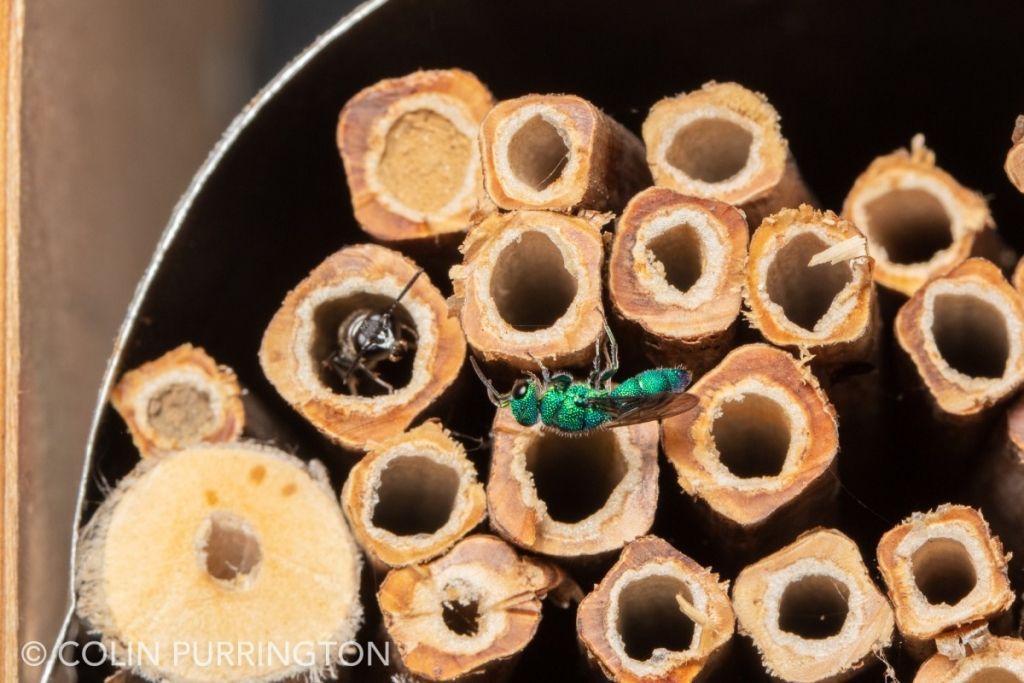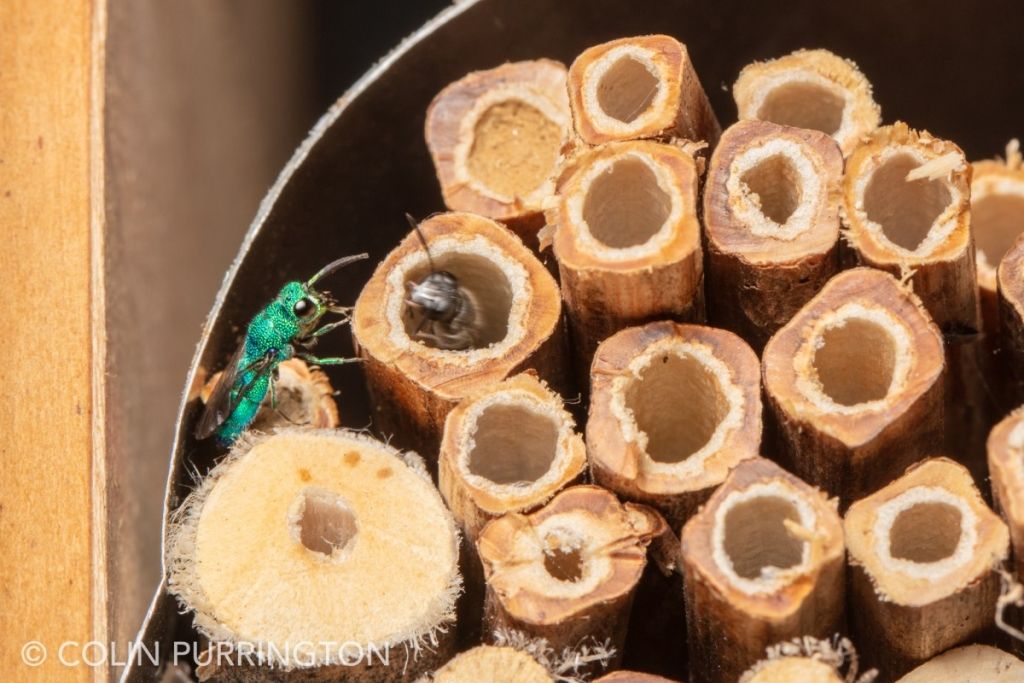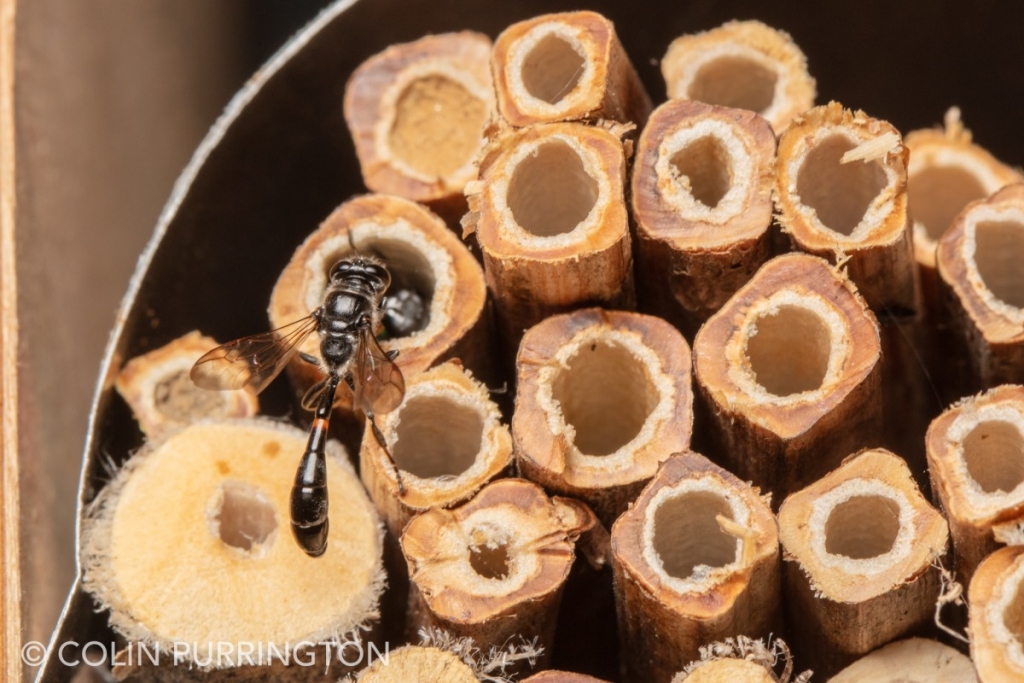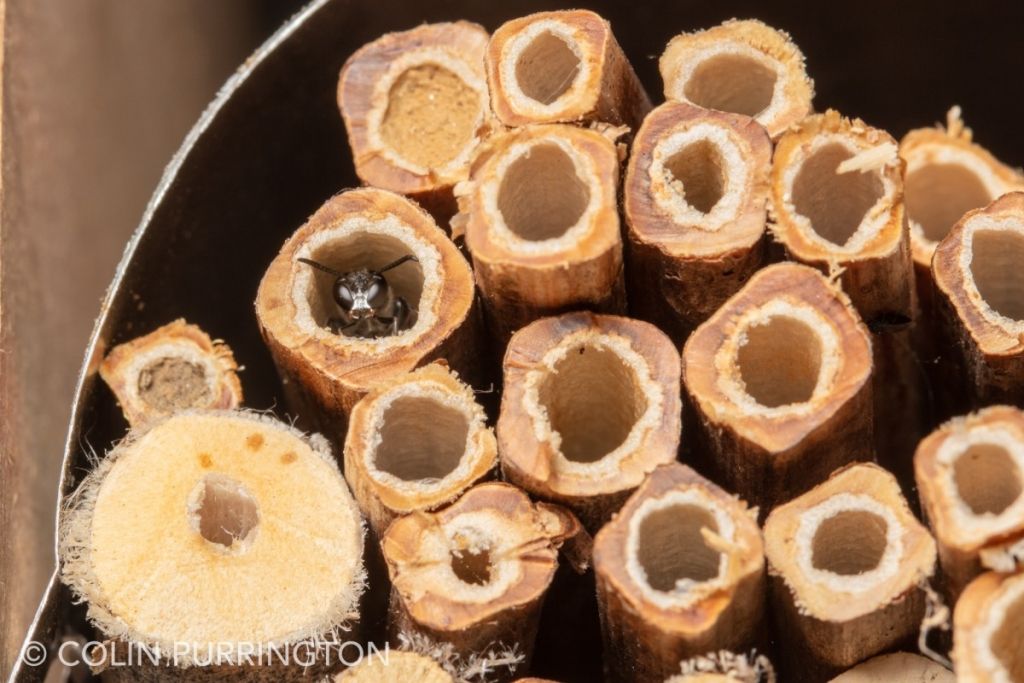Below is a series of photographs of a cuckoo wasp (likely Caenochrysis sp.) attempting to gain entrance to a nest of Trypoxylon collinum (Crabonidae) to oviposit. Normally the cuckoo wasp will just wait until the nest is empty, but on this occasion she took more active measures. The nest is inside a section of Monarda fistulosa (wild bergamot) and is packed full of paralyzed spiders.
The first photographs shows the cuckoo wasp slowly approaching while the guarding male gnashes his mandibles and looks threatening. This goes on for several minutes. The cuckoo wasp just gets closer and closer.

Finally the cuckoo wasp is close enough that the male lunges out. It was so fast he’s just a blur. The cuckoo wasp doesn’t back up.

The male continues to parry with the cuckoo wasp, which also is equipped with formidable mandibles. At no point during this interaction do I see the cuckoo wasp back up. She’s completely calm.

Here’s where I was surprised. Out of nowhere the female Trypoxylon wasp comes back and the male immediately leaves the nest to escort her back inside the stem (as he always does). In that instant the cuckoo wasp darts inside to oviposit. I didn’t catch any of this drama but the photograph below shows the male outside the nest and the female inside (you can see her head). They must surely know there’s a parasitic wasp inside, laying eggs, right?

Now comes the part where the female disappears into the nest for a few seconds. I can hear loud buzzing. Then the female leaves and the male goes back inside. The cuckoo wasp is still inside.

The final photograph is the male glaring at me. The cuckoo was is still inside the nest because I can hear her buzzing. After about 20 minutes I can still hear her. Then it becomes quiet. The tube was walled up the following day so I’m guessing the trypoxylons entombed the cuckoo wasp. I can’t confirm this, however, because the two days later when I checked the tube it was uncapped. Perhaps the cuckoo wasp recovered from being paralyzed or damaged and chewed her way out, or maybe a bird came and pecked away the cap — there’s no way to know.

In researching this phenomenon I found one paper with good detail about how cuckoo wasps gain entry to the nest. According to Muschini and Donatti (2012), a Chrysididae will approach a nest of Trypoxylon agamemnom from the top and then attempt to slide in between the male’s antennae. I would love to see a video of that.
